Pulsar Fusion and Princeton Satellite Systems to develop fusion rocket engine

Design image of the spacecraft from Pulsar Fusion. Propulsion system shown in section
For the further development of rocket and space technology and beyond the Earth's orbit, new technologies are required, first of all, fundamentally new propulsion systems. Now a number of projects of this kind based on the most daring ideas are being worked out in several countries. Thus, the British company Pulsar Fusion, in cooperation with the American Princeton Satellite Systems, began work on a Direct Fusion Drive fusion engine. It is expected that such a product will show unique technical and economic characteristics.
Promising direction
The British company Pulsar Fusion was founded in 2011 by a group of young professionals. She calls her goal the development of new propulsion systems for rocket and space technology, which will help make the next breakthrough in this area. Ideally, new developments and propulsion systems will have to provide access beyond the earth's orbit and full-fledged activity near distant celestial bodies.
The company is working on different options for engines and fuel for them. So, in November 2021, the first fire tests of solid fuels made using recycled polyethylene took place. The specific fuel charge showed the required level of performance, and also confirmed the possibility of using recyclable materials in rocket technology.
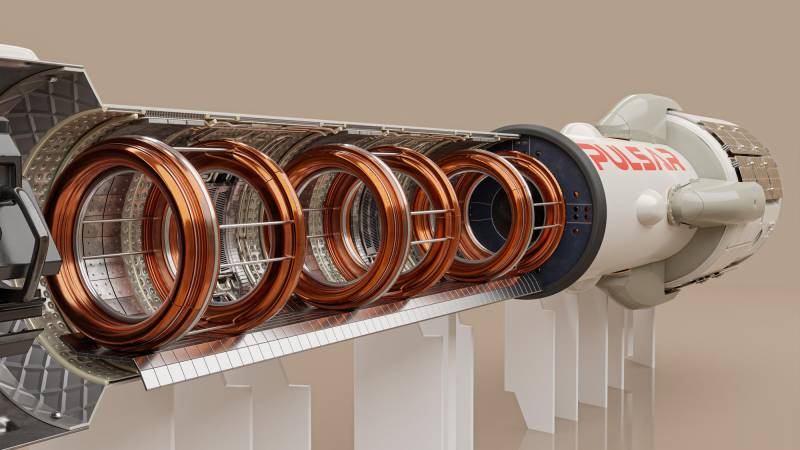
Fusion reactor engine
Over the past few years, Pulsar Fusion has been talking about its intention to develop and build a fusion rocket engine. When solving all the design problems that are set, such an installation will show unique characteristics of traction and efficiency. It is expected that with the help of a fusion engine, spacecraft will be able to cover large distances in a minimum time.
Until recently, the company was engaged only in the theoretical development of a promising project. Now the work is moving to a new stage. In mid-June, Pulsar Fusion signed an agreement with the American company Princeton Satellite Systems. Together they are going to conduct the necessary research and form the optimal image of the engine for further development of project documentation.
It is curious that the company already has a rough idea of what a promising engine will be like. She is already demonstrating computer models of the installation itself and the spacecraft with it. The shown product has all the necessary components corresponding to the concept of the project. However, in the future, as the project develops, the appearance of the installation may change.
scientific stage
Under a recently signed agreement, Pulsar Fusion and Princeton Satellite Systems will work together on the necessary research in the near future. The technical base for these works will be provided by the American side. The main part of the work will take place at the Princeton Field-Reversed Configuration 2 (PFRC-2) research facility, which has already been used in various research programs, American and foreign.
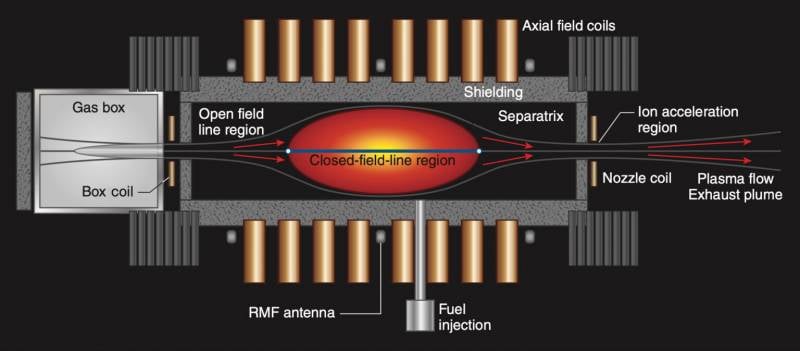
Schematic diagram of the DFD engine
The idea of a thermonuclear installation with an inverted magnetic configuration (Field-Reversed Configuration) was proposed in the early XNUMXs. Shortly thereafter, the Princeton Plasma Physics Laboratory built and tested a pilot plant of this kind. Having confirmed the operability of the concept, she continued research. The work is being carried out by order of the US Department of Energy and NASA.
Subsequently, Princeton Satellite Systems joined the research on a thermonuclear engine. She set up her own research base and built the PFRC-2 facility. In the future, as new stages of research are implemented, it is planned to create two more experimental complexes.
Apparently, Pulsar Fusion and Princeton Satellite Systems will share the responsibility. The American side can take a leading role in research, while British specialists will directly develop the engine based on new technologies. So, they are already assembling some units, probably for part of the testing.
No later than 2027, it is planned to build and test a full-fledged technology demonstrator engine. It will have to be significantly different from the laboratory installation and allow installation on hypothetical spacecraft.
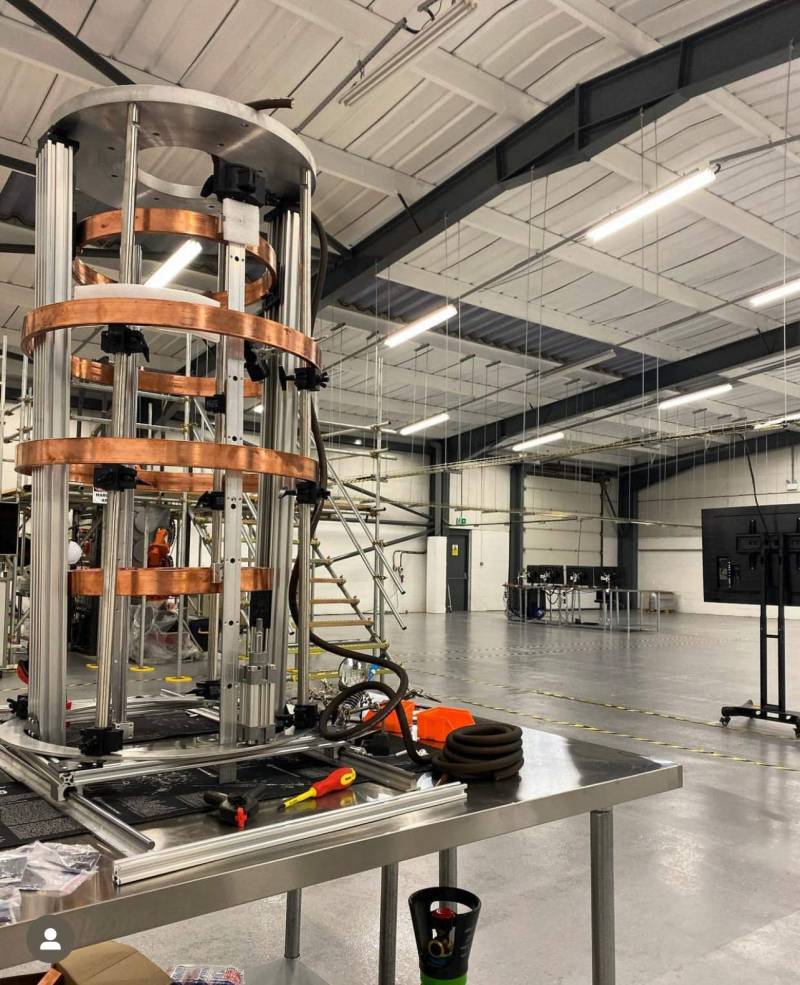
In the process of assembling elements of an experienced DFD
Thrust from synthesis
The Pulsar Fusion and Princeton Sattelite Systems project is based on the Direct Fusion Drive (DFD) concept. It provides for obtaining thrust directly from thermonuclear fusion, without intermediate stages of power generation, etc. To implement such a concept, an engine of a specific design is required, which has some features and elements of a thermonuclear reactor.
The PFRC-2 research facility can be considered a prototype of the DFD engine. It has an appropriate design and all the necessary devices. At the same time, the laboratory complex has limited dimensions and requires a lot of related equipment. In addition, it does not show the desired level of characteristics. All this makes it possible to conduct experiments, but excludes a full-fledged implementation in practice.
The main element of the DFD engine is a thermonuclear reactor in the form of a cylindrical chamber, on which electromagnetic coils are put on from the outside. The gas used in thermonuclear fusion, such as a mixture of deuterium and helium-3, is fed into the chamber. Then the reaction starts and a plasma clot of elliptical or spindle shape is created in the center of the chamber. Provides a constant supply of new fuel to maintain the reaction for the required time.
Through one of the ends, the working fluid of the engine is fed into the chamber - this or that substance in gaseous form. In the course of research, it is necessary to determine the optimal composition of such a “fuel”. Passing through the chamber, the working fluid must receive energy, heat up without reaching the plasma state, and be directed to the nozzle at the other end of the chamber. Exiting through the nozzle, the gas will create the necessary thrust.
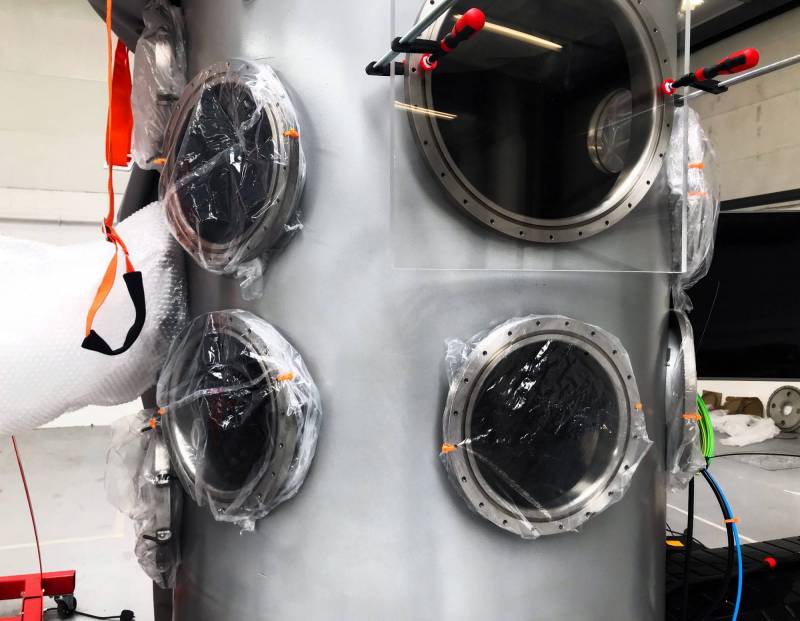
A thermonuclear reaction makes it possible to create a temperature of several million degrees in the reactor chamber and transfer the corresponding highest energies to the working fluid. Accordingly, it becomes possible to dramatically improve the energy parameters of the engine - its thrust will increase while maintaining an acceptable consumption of the working fluid. In this case, there are no losses for intermediate energy conversions.
Technology perspectives
Pulsar Fusion reveals the desired performance of its DFD engine. So, in the published materials, a hypothetical rocket-like spacecraft weighing 10 tons appears. It is equipped with a thermonuclear reactor several meters long, with which it can reach speeds of more than 220 km / s.
With this speed, the minimum distance from Earth to Mars is overcome in two days. The flight to Titan, to the orbit of Saturn, on the optimal trajectory will take two months. Such calculations do not take into account the need for acceleration and deceleration and other aspects of space flight. However, even in this case, the DFD project looks much more interesting than modern "chemical" engines.
Other advantages of the DFD installation are also pointed out. Thus, a thermonuclear reactor can be used to generate electricity, and in unusually large volumes for space technology. The fuel for the reactor does not require much space, and the working fluid is proposed to be collected directly in outer space. With all this, the radiation hazard of the installation and its exhaust is minimal, and in this respect DFD is superior to other options for nuclear engines for space.
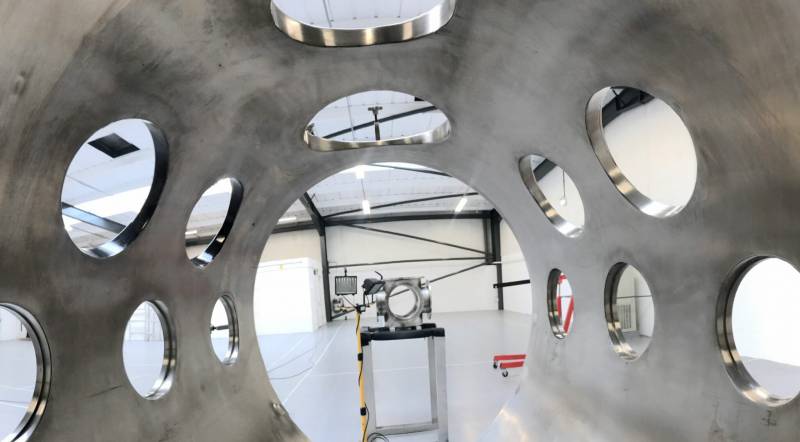
However, the DFD concept has a number of disadvantages, incl. critical. First of all, the problem is the immaturity of thermonuclear fusion technology. Despite all efforts, it has not yet been possible to create a reactor that will produce more energy than is required to work with plasma. At the same time, a DFD engine needs a large energy output - the parameters of the working fluid and flight characteristics depend on it.
In addition, British and American specialists will have to solve the problem of dimensions and weight. The propulsion system must comply with the parameters of the spacecraft and the limitations of the launch vehicle. Experimental complexes occupying large premises and requiring additional infrastructure have no practical prospects.
With a vision for the future
In general, the concept of the DFD thermonuclear rocket engine and the project from Pulsar Fusion is of great interest. A new engine design for rocket and space technology is proposed, which can provide a significant increase in performance. At the same time, a new type of installation will be able to bypass existing samples in key parameters, even with limited success - such a large backlog has a new concept.
However, the development of the DFD engine faces a number of serious limitations and challenges at all levels. Even the central unit of the engine is not ready, without which the entire system will not be able to work and show the desired characteristics. Companies participating in the new project will have to solve a number of complex problems. If they cope with the tasks set, astronautics will receive new opportunities. Otherwise story rocket technology will be replenished with another interesting, but useless project.
Information